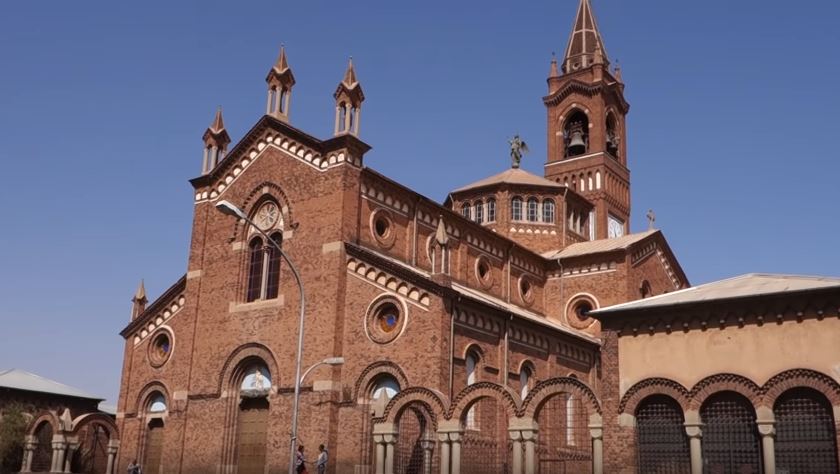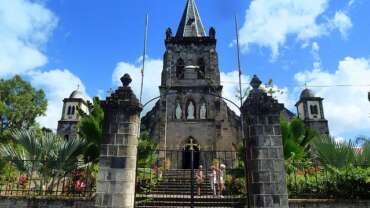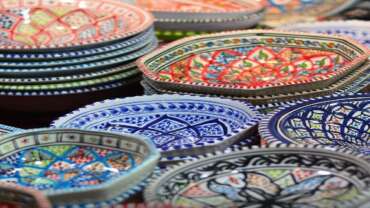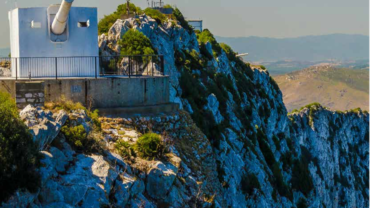Eritrea Simply Magnificent
Eritrea, country of the Horn of Africa, located on the Red Sea. Eritrea’s coastal location has long been important in its history and culture—a fact reflected in its name, which is an Italianized version of Mare Erythraeum, Latin for “Red Sea.” The Red Sea was the route by which Christianity and Islam reached the area, and it was an important trade route that such powers as Turkey, Egypt, and Italy hoped to dominate by seizing control of ports on the Eritrean coast. Those ports promised access to the gold, coffee, and slaves sold by traders in the Ethiopian highlands to the south, and, in the second half of the 20th century, Ethiopia became the power from which the Eritrean people had to free themselves in order to create their own state.
It shares borders with Ethiopia, Sudan and Djibouti. The capital city, Asmara, is known for its Italian colonial buildings, like St. Joseph’s Cathedral, as well as art deco structures. Italian, Egyptian and Turkish architecture in Massawa reflect the port city’s colorful history. Notable buildings here include St. Mariam Cathedral and the Imperial Palace.
History of Eritrea
Precolonial Eritrea
Rule from the highlands
Beginning about 1000 BCE, Semitic peoples from the South Arabian kingdom of Sabaʾ (Sheba) migrated across the Red Sea and absorbed the Cushitic inhabitants of the Eritrean coast and adjacent highlands. These Semitic invaders, possessing a well-developed culture, established the kingdom of Aksum, which, by the end of the 4th century CE, ruled the northern stretches of the Ethiopian Plateau and the eastern lowlands. An important trade route led from the port of Adulis, near modern Zula, to the city of Aksum, the capital, located in what is now the Ethiopian province of Tigray.
After extending its power at times as far afield as modern Egypt and Yemen, Aksum began to decline into obscurity in the 6th century CE. Beginning in the 12th century, however, the Ethiopian Zagwe and Solomonid dynasties held sway to a fluctuating extent over the entire plateau and the Red Sea coast. Eritrea’s central highlands, known as the mereb melash (“land beyond the Mereb River”), were the northern frontier region of the Ethiopian kingdoms and were ruled by a governor titled bahr negash (“lord of the sea”). The control exercised by the crown over this region was never firm, and it became even more tenuous as the centre of Ethiopian power moved steadily southward to Gonder and Shewa. Highland Eritrea became a vassal fiefdom of the lords of Tigray, who were seldom on good terms with the dominant Amhara branch of the Ethiopian family.
Contesting for the coastlands and beyond
Off the plateau, the pastoralist peoples in the west and north knew no foreign master until the early 19th century, when the Egyptians invaded Sudan and raided deep into the Eritrean lowlands. The Red Sea coast, having its strategic and commercial importance, was contested by many powers. In the 16th century the Ottoman Turks occupied the Dahlak Archipelago and then Massawa, where they maintained with occasional interruption a garrison for more than three centuries. Also in the 16th century, Eritrea as well as Ethiopia was affected by the invasions of Aḥmad GrāŃ, the Muslim leader of the sultanate of Adal. After the expulsion of Aḥmad’s forces, the Ottoman Turks temporarily occupied even more of Eritrea’s coastal area. In 1865 the Egyptians obtained Massawa from the Turks. From there they pushed inland to the plateau, until in 1875 an Egyptian force that reached the Mereb River was annihilated by Ethiopian forces.
Meanwhile, the opening of the Suez Canal in 1869 had made the Red Sea a scene of rivalry among the world’s most powerful states. Between 1869 and 1880 the Italian Rubattino Navigation Company purchased from the local Afar sultan stretches of the Red Sea coast adjoining the village of Asseb. In 1882 these acquisitions were transferred to the Italian state, and in 1885 Italian troops landed at Massawa, Asseb, and other locations. There was no resistance by the Egyptians at Massawa, and protests made by the Turks and Ethiopians were ignored. Italian forces then systematically spread out from Massawa toward the highlands.
The Italians’ expansion onto the plateau was initially opposed by Emperor Yohannes IV, the only Tigray to wear the Ethiopian crown in modern times, but Yohannes’s successor, Menilek II, in return for weapons that he needed to fight possible rivals, acquiesced to Italian occupation of the region north of the Mereb. In the Treaty of Wichale, signed on May 2, 1889, Menilek recognized “Italian possessions in the Red Sea,” and on January 1, 1890, the Italian colony of Eritrea was officially proclaimed. From Eritrea the Italians launched several incursions into Ethiopia, only to be decisively defeated by Menilek’s army at the Battle of Adwa on March 1, 1896. Menilek did not pursue the defeated enemy across the Mereb. Soon afterward he signed the Treaty of Addis Ababa, obtaining Italian recognition of Ethiopia’s sovereignty in return for his recognition of Italian rule over Eritrea.
Colonial Eritrea
Rule by Italy
In precolonial times there were no towns on the Eritrean plateau, urban centres being limited to the Red Sea coast. Under Italian rule, however, Eritrea’s urban sector flourished. Tens of thousands of Italians arrived, bringing with them modern skills and a new lifestyle. Asmara grew into a charming city in the Mediterranean style, the port of Massawa was modernized and the port of Asseb improved, and a number of smaller towns appeared on the plateau. Road and rail construction linked the various regions of the colony, and a modest manufacturing sector also appeared, in which Eritreans acquired industrial skills.
At the same time, a sizable portion of Eritrea’s best agricultural land was reserved for Italian farmers (although only a few actually settled on the land), and a small plantation sector was established to grow produce for the urban market. Eritrea’s population grew rapidly during this period. Combined with the appropriation of land for Italian use, population growth created a shortage of land for Eritrean farmers. This in turn stimulated a drift to the cities, which further expanded the urban population and produced an Eritrean working class.
Still, Eritrea had no valuable resources for exploitation and was not a wealth-producing colony for Italy. In fact, the colony was subsidized by the Italians, an extraneous factor that gave the local economy an artificial glow. Investment in education for Eritreans was negligible. There were very few schools for them, and these were limited to the primary level. Also, Eritreans were not employed in the colonial service except as labourers and soldiers. As preparations for the Italian invasion of Ethiopia got under way in the mid-1930s, several thousand Eritreans were recruited to serve in the invading army.
From Italian to Ethiopian rule
Italy’s invasion and occupation of Ethiopia beginning in 1935—including Ethiopia’s annexation and incorporation into Italian East Africa in 1936—marked the last chapter in Italian colonial history. The chapter came to an end with the eviction of Italy from the Horn of Africa by the British in 1941, during World War II. The following decade, during which Eritrea remained under British administration, was a period of intense political and diplomatic activity that shaped the future of Eritrea.
Landlocked Ethiopia, coveting Eritrea’s two seaports, launched an early campaign to annex the former colony, claiming that it had always been part of Ethiopia’s domain. Lobbying of the Allied powers was carried out, and within Eritrea, with the help of Ethiopian Orthodox clergy, support for annexation was mobilized on the basis of religious loyalty. In order to promote the union of Eritrea with Ethiopia, a Unionist Party was formed in 1946; it was financed and guided from the Ethiopian capital, Addis Ababa.
Eritrea’s Muslims had every good reason to oppose union with Ethiopia, where Christianity was the official religion and Muslims suffered discrimination in many areas of life. In order to counter Christian mobilization for union, a Muslim League was founded in 1947 to campaign for Eritrean independence. Thus, although there were some Christians who favoured independence and a few Muslims who were favourable to union with Ethiopia, the political division was drawn largely along sectarian lines.
People of Eritrea
Ethnic groups and languages
Eritrea’s population consists of several ethnic groups, each with its own language and cultural tradition. In addition to the languages spoken by the various ethnic groups, Arabic and English are widely understood. Italian is occasionally used as well.
The bulk of the people in the Eritrean highlands are Tigray. In Eritrea that group is sometimes called Tigrinya, though linguists of Semitic languages note that -nya is an Amharic suffix meaning “language of.” In any case, proper nomenclature for the people is fluid, given contemporary political sensitivities. The Tigray make up about half the country’s total population. They also occupy the adjacent Ethiopian region of Tigray. The Tigrinya language is one of two major indigenous languages in Eritrea.
Inhabiting the northernmost part of the Eritrean plateau, as well as lowlands to the east and west, are the Tigre people. The Tigre, who constitute nearly one-third of Eritrea’s population, speak the other major Eritrean language—Tigré. Tigré and Tigrinya are written in the same script and are both related to the ancient Semitic Geʿez language, but they are mutually unintelligible.
Also occupying the northern plateau are Bilin speakers, whose language belongs to the Cushitic family. The Rashaida are a group of Arabic-speaking nomads who traverse the northern hills. On the southern part of the coastal region live Afar nomads. The Afars—who also live across the borders in Djibouti and Ethiopia—are known to surrounding peoples as the Danakil, after the region that they inhabit. The coastal strip south of Massawa, as well as the eastern flanks of the plateau, are occupied by Saho pastoralists. In the western plain the dominant people are Beja pastoralists; Beja also live across the border in Sudan. Two small groups speaking Nilotic languages, the Kunama and the Nara, also live in the west.
Religion of Eritrea
Historically, religion has been a prominent symbol of ethnic identity in the Horn of Africa. Christianity was established in the 4th century CE on the coast and appeared soon afterward in the plateau, where it was embraced by the Ethiopian highlanders. Prior to Eritrea’s secession from Ethiopia in 1993, about half the population of Eritrea belonged to the Ethiopian Orthodox Tewahedo Church, including nearly all the Tigrinya. After the country gained its independence, it appealed to the patriarch of the Coptic church for autocephaly, which was granted.
About one-half of Eritrea’s population is Christian, with members of the Eritrean Orthodox Tewahedo Church accounting for some two-fifths. The rest of the Christian population is primarily Roman Catholic with a small number of Protestants, stemming from the time of Italian colonial rule (1889–1941), when Roman Catholic and Protestant European missionaries introduced their own versions of Christianity into Eritrea. They had considerable success among the small Kunama group, and they also attracted a few townspeople with the offer of modern education.
Following the rise of Islam in Arabia in the 7th century, Muslim power flowed over the Red Sea coast, forcing the Ethiopians to retreat deep into their mountain fastness. Islam displaced other creeds in the lowlands of the Horn, and it remains the faith of about one-half of the Eritrean population, including nearly all the people inhabiting the eastern coast and the western plain of Eritrea, as well as the northernmost part of the plateau. Thus, while Islam claims nearly all the pastoralists, Christianity is dominant among the cultivators. Muslims are also significantly represented in all towns of Eritrea, where they are prominent in trade. In the perennial competition between cultivators and pastoralists over land, water, control of trade, and access to ports, religion has played an ideological role, and it remains a potent political force.
Cultural Life of Eritrea
The “golden oldies” of Tigrinya pop, a style that was popularized throughout Africa in the late 1960s by such artists as Beyene Fre, Tewolde Redda, and Alamin, remain popular in Eritrea. Contemporary popular musicians in Eritrea include Sami Berhane, Wedi Tukul, and Faytinga. Reggae, which originated in Jamaica, also has a presence in Eritrea.
Eritrean cuisine has not yet gained the popularity that its Ethiopian counterpart has found in many countries around the world. The two cuisines share some ingredients, techniques, and staples, including injera, a chewy flatbread made of teff, wheat, or sorghum flour, and kitcha, an unleavened bread. Meals typically are served on a communal platter, and diners use bread, rather than utensils, to serve themselves portions of such dishes as zigni (a stew made of fish, vegetables, and meat), ful (baked beans), dorho (roasted chicken), ga’at (porridge), and shiro (lentils). These dishes are seldom eaten without a side dish of fiery berbere, a locally produced pepper that figures prominently in Eritrean cooking. Eritrean food also shows many influences from the country’s erstwhile Italian occupiers, with such dishes as capretto (goat), frittata (vegetable omelet), and pasta featured on many menus.
Coffee is an important ingredient of Eritrean social life. Making a good cup of coffee, Eritreans say, requires both patience and skill. The commonly accepted method of making coffee suggests the need for both: coffee beans are roasted in a skillet or oven, pounded and ground with a mortar and pestle, and then poured into a pot that is half full of cold water and, sometimes, ginger root. After the mix is boiled, it is poured through an oxtail filter and served in small porcelain cups with sugar cubes. Popcorn or other snacks may be eaten as accompaniments to the coffee.
Eritreans enjoy playing sports, especially football (soccer), which was introduced during the Italian occupation. Eritrea’s national football team is known as the Red Sea Boys. Eritreans also participate in basketball, cycling, and athletics (track and field). Outdoor activities include fishing and snorkeling, which is especially popular on the Dahlak islands.
Traditional Courtesies
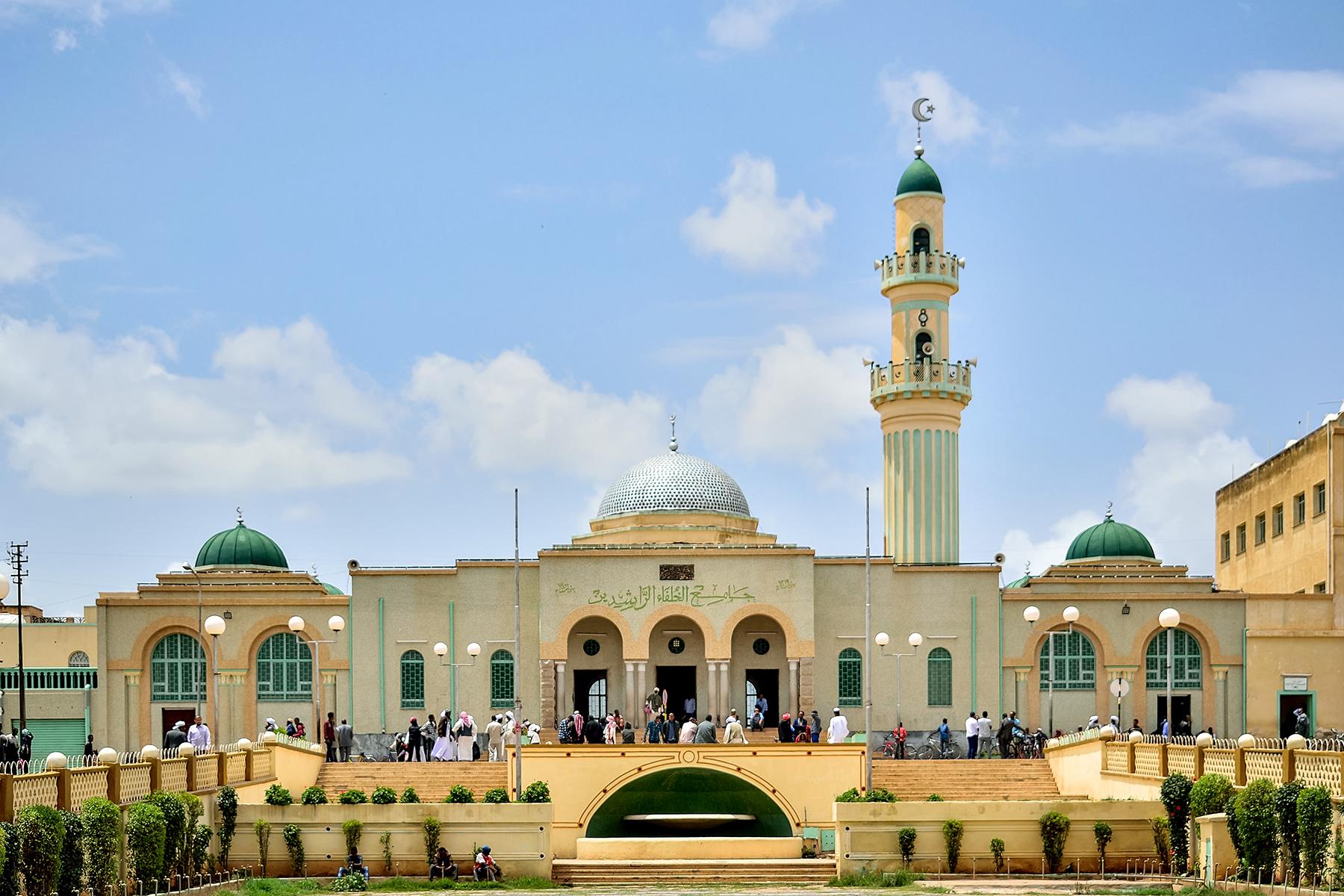
While Eritreans are well aware of the form in other countries, they tend to be conservative at home. A handshake greeting is normal, with a pleasant discussion on personal matters before getting down to business. The offer of tea or coffee is normal. Smoking is not popular amongst traditional or elderly people. Shoes are often taken off before entering orthodox churches, and always before entering mosques.
Photographing: To capture the beautiful touristic attraction that Eritrea offers, travelers are advised to bring their own camera.
You should avoid talking photographs of Government buildings and Military establishments. Do also remember that many local people, especially the lowlanders, don’t like to be photographed.
Hence, be courteous and use discretion when talking photos of people and ask permission before doing so. Professionals (Journalists, travel writers, researchers, etc) need explicit photographic permits obtained from the Ministry of Information.
Arts & Entertainment: Drama, art, music and dance are all culturally very important. Dance plays a very important role in traditional culture, varying considerably from one ethnic group to another. If you are in Asmara between May 20 – 24 you will experience many public dances in the streets to celebrate the liberation of the country.
Teatro Asmara, in Asmara often has some interesting plays that are greatly appreciated by the local audiences.
Eritrean music has a distinct beat created by the koboro (drum) accompanied by a range of different instruments like the krar (guitar), wata (violin), shambuko (flute), embilta (wind instrument) and melekhet (traditional saxophone). Some of the night clubs have live music, otherwise being invited to a wedding or other major ceremony should guarantee the opportunity.
In Asmara there are four cinemas, one theatre, many different nightclubs, literally hundreds of bars and restaurants, some with billiards, and even a bowling alley. In Asmara, the festivities take place in Expo, on the airport road.



